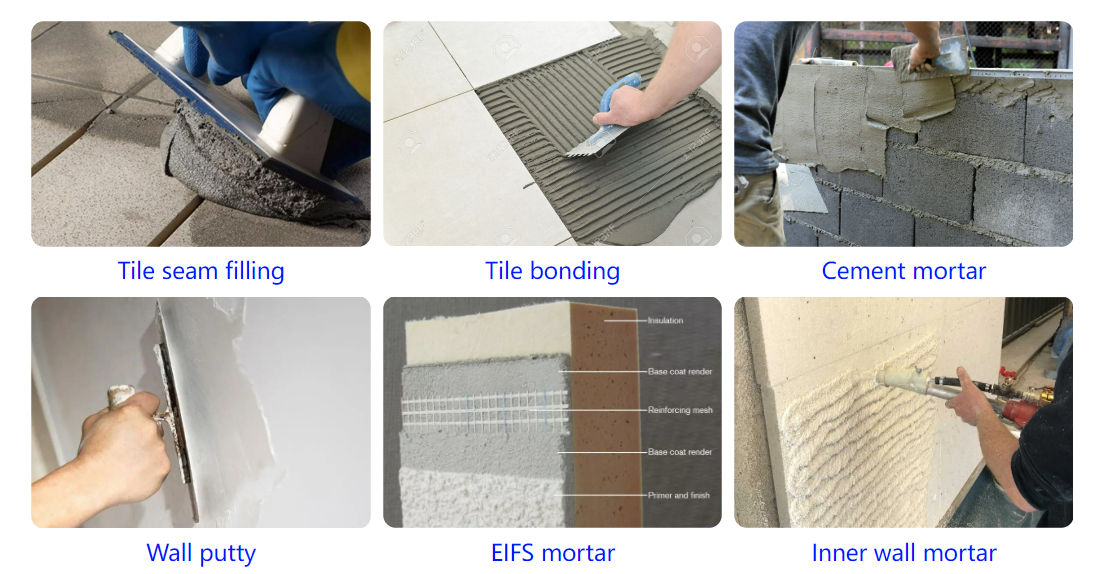
Dec . 05, 2024 07:21 Back to list
Exploring HPMC Applications in Modern Construction Techniques and Materials
The Impact of HPMC in Construction A Comprehensive Overview
Hydroxypropyl Methylcellulose (HPMC) is a versatile polymer that has found extensive applications in the construction industry. This water-soluble compound, derived from cellulose, possesses unique properties that make it an essential additive in various construction materials, including mortar, plaster, and tile adhesives. Understanding the significance of HPMC in construction can provide insights into its benefits, applications, and future potential.
Properties of HPMC
HPMC is known for its remarkable binding, thickening, and water-retaining properties. These characteristics contribute to improved workability and enhanced performance of construction materials. When added to mortar and plaster, HPMC increases viscosity, allowing for better adherence to surfaces and preventing the separation of components. Furthermore, its water-retention ability helps maintain moisture levels during the curing process, which is critical for achieving optimal strength and durability.
Applications in Construction
1. Mortar and Plaster HPMC is widely used in the formulation of dry mix mortars and plasters. It aids in improving the consistency and adhesion of these materials, ensuring a smooth application and preventing cracking. The water-retaining properties of HPMC also facilitate prolonged workability, allowing builders to work efficiently without compromising on the quality.
2. Tile Adhesives In the realm of tile installation, HPMC plays a crucial role. It enhances the tackiness of tile adhesives, providing a strong bond between tiles and substrates. This improves the longevity of tile installations, making them more resistant to moisture and temperature fluctuations.
3. Concrete In concrete applications, HPMC acts as a superplasticizer, enhancing the flowability of concrete mixtures. This results in better compaction and reduced water usage, leading to higher strength and lower permeability. As the construction industry increasingly focuses on sustainability, HPMC's ability to improve the performance of concrete while minimizing environmental impact becomes ever more relevant.
4. Paints and Coatings The use of HPMC extends beyond traditional construction materials. It is also utilized in paints and coatings to improve texture and enhance spreadability. HPMC helps in stabilizing pigment suspensions, providing a uniform finish and improving the durability of the coating.
Benefits of HPMC in Construction
construction hpmc

The inclusion of HPMC in construction materials offers several benefits
- Enhanced Workability HPMC improves the ease of application for various construction materials, which can lead to more efficient project completion and reduced labor costs.
- Increased Durability By promoting proper hydration and bonding, HPMC contributes to the overall durability and longevity of construction projects, thereby reducing maintenance costs over time.
- Sustainability As the construction industry seeks to adopt more sustainable practices, HPMC presents an eco-friendly solution. Its ability to improve the performance of materials while requiring lower water content aligns with the principles of sustainable building.
Challenges and Considerations
Despite its numerous advantages, there are also challenges associated with using HPMC in construction. Variability in quality and properties of HPMC from different manufacturers may lead to inconsistencies in performance. Therefore, it is crucial for construction professionals to work closely with suppliers to ensure that the right grade of HPMC is used for specific applications.
Moreover, while HPMC can enhance water retention, excessive use can lead to issues such as slumping or reduced strength. It is important to optimize the dosage to achieve the desired properties without compromising material performance.
Conclusion
Hydroxypropyl Methylcellulose is a key player in modern construction, providing numerous benefits across various applications. As the industry continues to evolve and prioritize sustainability, the role of HPMC is likely to expand, ensuring improved performance and durability in construction materials. By understanding its properties and applications, professionals in the field can leverage HPMC to enhance the quality and efficiency of their projects.
-
Versatile Hpmc Uses in Different Industries
NewsJun.19,2025
-
Redispersible Powder's Role in Enhancing Durability of Construction Products
NewsJun.19,2025
-
Hydroxyethyl Cellulose Applications Driving Green Industrial Processes
NewsJun.19,2025
-
Exploring Different Redispersible Polymer Powder
NewsJun.19,2025
-
Choosing the Right Mortar Bonding Agent
NewsJun.19,2025
-
Applications and Significance of China Hpmc in Modern Industries
NewsJun.19,2025







